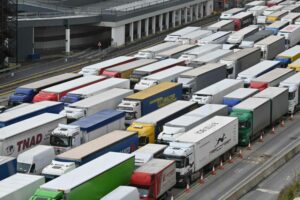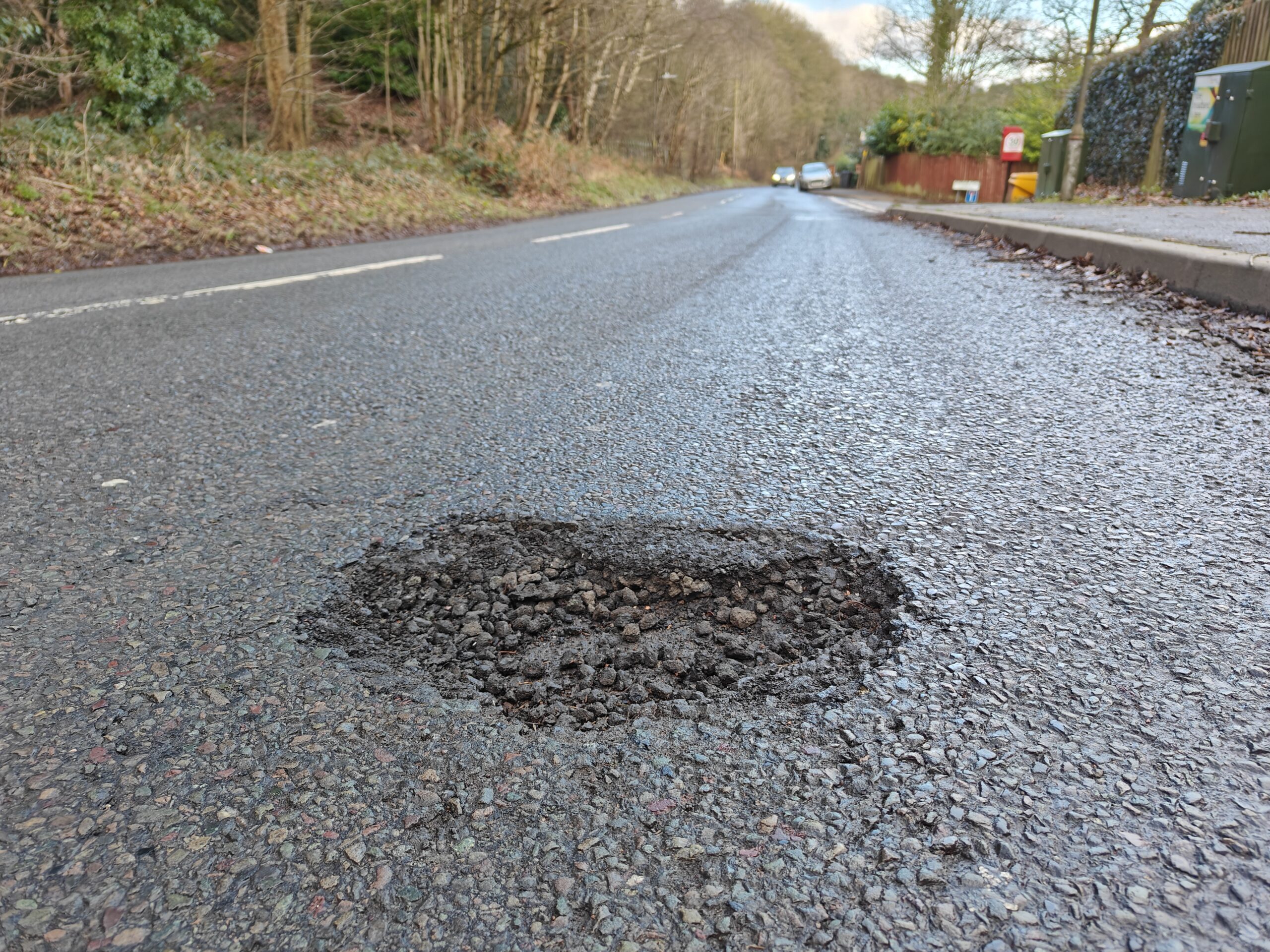BY: Adam Bernstein
Britain is a nation of shopkeepers (and online traders). But so are our continental cousins, and it’s galling to some that a new and alien trade regime is now in place with the potential to damage all who come across it.
Whether a high street retailer, a manufacturer requiring components, or a distributor, there are no end of problems for firms caught by the new trading terms that the UK and EU agreed recently.

End of free movement
Free movement of goods as we know it has ended. The Guardian, in a December story headlined UK business leaders warn of Brexit red tape ‘tidal wave’ even with deal, reported the Confederation of British Industry’s deputy director general Josh Hardie as saying that “preparation doesn’t mean protection if a tidal wave is coming. You can put in place the sandbags, and that helps a bit, but the water is still going to get through.” His view is based on the fact that countless surveys had shown that British firms didn’t have information to prepare for the new system and so would struggle to keep goods moving from January.
Many are flustered. Ben Fletcher from Make UK, a manufacturers’ organisation, felt that some firms might go into a form of hibernation at the start of 2021 – that is, that they’ll not even bother to move goods into and out of the UK, preferring “to see how the land lies in the first couple of weeks”, especially while the end of November is fresh in the memory (a five-mile tailback of lorries built up on the M20 as the French tested their post-Brexit system).
Businesses are also facing increased costs. Globally, containers are in the wrong places, and anecdotal evidence suggests that a ‘premium’ service from shipping lines, where containers were guaranteed to be on a vessel for an $8000-per-40ft-container supplement, is now the norm. And a BBC report at the start
of January noted how “international shipping companies, including Federal Express and TNT, are levying extra charges on shipments between the UK and the EU.”
Accepting new customs
For Andy Cliff, director of international logistics and customs firm Straightforward Consultancy Ltd, the problem is that everything has changed. He says: “From January, the
UK became a so-called ‘Third Country’, meaning that if we import something from say, Germany, it will require a similar level of complexity to imports from China or the US. We have left the Customs Union, discarded their Common External Tariff and have launched our own UK Global Customs Tariff, which has different duty rates.”
The question is – how will this be dealt with?
Catherine Stephens, head of International Trade Services at Business West, speaking at the end of December, put the problem into sharp relief when she noted that the number of customs declarations that companies will need to complete could increase
from 55 million to 255 million.
To pour more fuel on to the fire, she cited a recent Business West Quarterly Economic Survey that found that “12% of companies surveyed were aware they need to complete customs declarations but had not yet organised how they will do this, while 11% trade with the EU and do not know what they must do to get prepared.”
Cliff is just as direct. In his dealings with clients looking to get to grips with the new regime, he’s found that “many have done little to prepare, seemingly delaying any preparations until they had more clarity on the outcome of trade negotiations”.
What particularly worries him is that many companies are not well informed; they seem to be ignorant of the fact that “customs declarations will be required for exports and imports regardless. If they have made no preparations at all, then the truth is that they may damage their own business considerably, especially if they are reliant on EU business”.
Original problems
Much of the bureaucracy comes from what are termed ‘rules of origin’ – the rules that tie a country of origin to a product in order to determine its “economic nationality” and the tariffs it is subject to.
For Stephens, they are problematic in several ways.
Firstly, firms were used to the old Customs Notices; these, she says, have mostly been replaced by other guidance on the Gov.uk website – “a lot of which is not complete or up to date.”
Next, she says: “Importers and exporters must get their heads around completely new rules – the Trade and Co-operation agreement (TCA)
as well as using different declarations, and ensuring they have the correct proofs of origin in place to be able to claim preference.”
It’s worth noting that there are easements where supplier declarations can be obtained until 31st Dec this year.
Cliff, here, takes the time to explain that “all trade deals will have certain conditions attached to them, and rules of origin were always going to be tricky, particularly as the UK wanted to retain access to the EU market on preferential terms, as did the EU on their exports”. His point is that the deal was only finalised on Christmas Eve and the TCA document was only released on 26th December, after many firms had closed for Christmas. He says: “The rules of origin are quite complicated, particularly for those who include non-UK made parts in their final product, with various minimum percentages needing to be hit before tariff-free access is granted.”
On top of that, there are also declarations of origin needed to meet the requirements
of the TCA. As Cliff says: “Very few firms have a clear understanding of the rules and we have taken many calls since 4th January asking for help.”
Next, Stephens continues, firms must make sure they are following the rules and have the correct proofs in place. She notes that because we have a free trade agreement “many assume that all goods coming into the UK will now have zero import duties and tariffs – this is not the case”.
The upshot of all of this is, as Stephens says:, “These parts could previously be brought into the EU, duties and taxes paid, making them free-circulation goods and then these goods could ship into the UK freely with no additional duties or taxes to pay. Now, they will incur import duties and taxes when being shipped into the EU, then when they are moved on to the UK, if they are not preferential-origin goods, then the likelihood is that they will also incur additional import duties and taxes – hence the double duty.”
Cliff takes a different view. He thinks that UK importers need to set up customs regimes and processes to solve this problem, avoiding any duty due upon arrival into the UK.
He says: “Most UK exporters will sell to the EU on DAP Incoterms (Delivered At Place) where their customer will be liable for the duties, which means duty is paid once.”
Of course, they will need to invest time and money setting up these processes, but the advantages could be large if the UK import duty rate is high.
For those firms that do nothing to understand the rules, Stephens sees believes they will have to increase the prices of their products.
The TCA is 1246 pages long while the rules of origin are
67 pages long.
Lawrence Bleasedale, Strategic Sales Director, TMD Friction UK Ltd
Bleasdale sees problems with the rules of origin, and says they “are more complex on assemblies where there is added value undertaken and content that originates outside the EU or the UK”.
He cites the case of EV batteries, voicing concern that the sector hasn’t really realised the implications of the deal. He says: “Items where the origin is declared outside either the UK or the EU will be subject to further tariffs when they move from
one to the other, the only exception being from Eire
to Northern Ireland.“If documentation is incorrect, goods will not be allowed to move.”
He adds: “Supply chains have become so efficient and margins so much thinner that the aftermarket is using cost-efficient suppliers, and some are outside the UK or the EU.”
Bleasdale predicts that there are going to be some short-term shortages and long-term cost increases, especially as “EU transport firms are reluctant to move goods into the UK, despite being offered premiums to do so, for fear of vehicles being held up in the UK”.
He also sees container shipping costs increasing, particularly from the Far East. “They think there will be delays in containers coming back, so a premium is being charged to subsidise the need to add containers into the supply chain,” he says.
In the long-term, he believes this could mean changes to the logistics model and larger firms
with operations in the EU shipping directly to Eire, rather than via the UK. However, he reckons: “This will not be practicable on
all large aftermarket ranges, so slower-moving lines will end up having double or conceivably triple duty, which will mean that the consumer will have to pay.”For example, there may be two legs to a product’s journey – say China to UK and UK to EU and duties and taxes will normally be borne by the importer at the first country of arrival. Using the right customs procedures, no international transaction should need to bear duties twice. Examples would be Customs Warehousing or Inward Processing. Cliff also thinks that not many companies realise that when the UK left the Customs Union (and their Common External Customs Tariff), the government set up a new customs tariff (the UK Global Tariff) which lowered or removed import duty for companies importing from the EU, and at the same time, extending these benefits to importers from non-EU countries. In fact, as he says, “some of my clients have seen import duty rates fall or disappear and they’ve used this saving to lower their UK prices.”
Dealing with red tape
Customers who traded primarily with EU now need
to educate themselves on Incoterms, the international rules of commerce which determine who pays what part of the transport costs, duties and taxes, and at what point risk passes from seller to buyer. Cliff reckons that “delivery times will lengthen from, say, 3-4 days to a possible 10-14 days as new customs procedures at borders start up and become strained”. He can see duties impacting the “margins on any selling price, as will charges for customs declarations”.
And on top of that, customers will need to take responsibility for classification of their goods both for exports and imports and export documentation as each side will need to meet a new, much higher, standard.
As Stephens says: “One of the crucial ways companies can prepare is to make sure they know how they are going to complete custom declarations.”
Colin Smit, MD of Lumag
Smit is bothered that “the government left businesses with little time to get to grips with the practicalities and detail of the deal with the EU, particularly on the finer points of how the border
with Ireland will work”.He’s also worried about future regulatory divergence, saying: “Companies with a foot in both camps will potentially have two sets of regulations to comply with if they want to sell products in the UK and the EU. The UK government has made no secret of the fact that it wants to diverge from a regulatory standpoint.”
On rules of origin, Smit says his peer group has a “limited understanding on how the rules of origin would work, and what impact it will have on wholesalers who buy commodities outside the EU and then export to the EU”.
He says: “It will impact our competitiveness.”
He cites changing tariffs where a UK reduction is beaten back by “another tariff to be paid, potentially by the customer when the goods land in the EU, or by the supplier of the goods, depending on the Incoterms agreed with them.”
Smit also notes that the commodity codes that the UK uses are also different from those used by the EU, and is already seeing the fallout; he points to several
EU companies suspending deliveries to the UK and UK retailers suspending deliveries to the EU. “I can see companies with an EU base, as well as a UK one, shipping direct to places like the ROI from their EU warehouses.”As for pricing, Smit thinks price increases are on the way: “Businesses won’t be able to swallow the margin degradation of not passing on the duty payable on non-EU exports/imports. Supply chains are already complex and when you talk about sub-assemblies or parts that are made in the UK using non-EU components it becomes even more so.”
With all of the issues, Smit advises talking to a customs clearance agent.
He says: “Use their logistics functions in the decision-making process; more often than not they will have been heavily involved in exports/imports before and they will be the ones that will need to make it work. Don’t forget about the VAT implications.”
One solution is training, but interestingly, the Business West survey showed that 25 percent of businesses will self-train. No doubt they’ll be using information from Gov.uk’s transition webpage, which features hotlinks to advice pages on importing from
and exporting to the EU and Northern Ireland.
Stephens adds: “Completing customs declarations is complicated and time-consuming, and any incorrect details will cause delays and incur extra costs.”
Similarly, it’s important to check the details of trade agreements with countries that firms trade with because these will determine the required documentation. Stephens says: “Regulations vary for different companies in different sectors, so firms who have not investigated the specifics for their own sectors risk being caught out.”
And for those thinking of trying to game the system, a warning from Cliff: “Many UK logistics providers have been asking UK exporters to complete their export invoices in a certain way, including things like the commodity codes for the products they ship. The irony is that the importer of record (EU or UK)
is the one responsible for the accuracy of the Customs declaration, and they can, if they wish, disregard the code on the export invoice if they disagree with it.”
But this gets problematic because “customs classification is not about using a more advantageous code with a lower rate, it’s about declaring the correct value and commodity code so that the appropriate import duty is paid. Trying to find a lower duty rate usually costs more
in the long run with fines and customs inspections.”
So, the biggest worry now is not so much the changing landscape but that some firms did not make any preparations for Brexit. Cliff has seen approaches for help in December and January, but “that is very late in the day”.
In summary
Naturally, how firms react to the new landscape will depend on how they value European trade. Low profitability and a poorly handled process can damage a business in a short period of time that could take years to correct. One thing is certain – there’s an awful lot of misunderstanding and confusion and the best advice is to seek good advice. The issue isn’t going to go away.











Go to comments